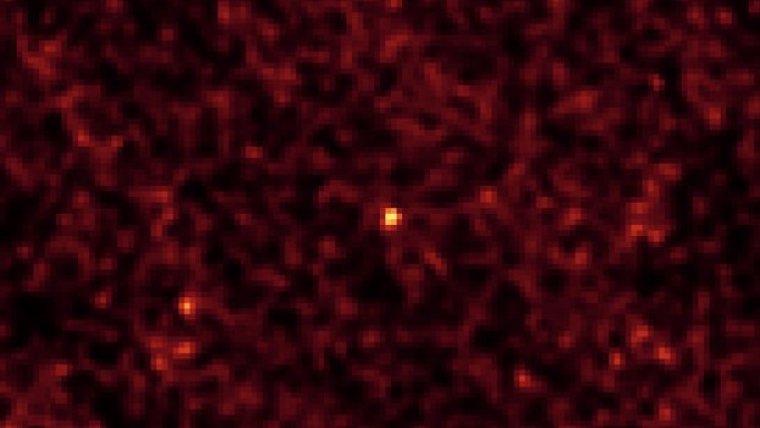| News / Space News |
NASA announces latest progress in hunt for asteroids
NASA | JUNE 22, 2014
NASA is on the hunt for an asteroid to capture with a robotic spacecraft, redirect to a stable orbit around the moon, and send astronauts to study in the 2020s all on the agency's human Path to Mars.

Observations from NASA's Spitzer Space Telescope reveal new information about the structure of 2011 MD, a small asteroid being considered by NASA for its proposed ARM. Image credit: NASA/JPL-Caltech
NASA plans to launch the ARM (Asteroid Redirect Mission) robotic spacecraft in 2019 and will make a final choice of the asteroid for the mission about a year before the spacecraft launches.
NASA is working on two concepts for the mission: The first is to fully capture a very small asteroid in open space, and the second is to collect a boulder-sized sample off of a much larger asteroid. Both concepts would require redirecting an asteroid less than 32 feet (10 meters) in size into the moon's orbit. The agency will choose between these two concepts in late 2014 and further refine the mission's design.
NASA's Spitzer Space Telescope made recent observations of an asteroid designated 2011 MD, which bears the characteristics of a good candidate for the full capture concept. While NASA will continue to look for other candidate asteroids during the next few years as the mission develops, astronomers are making progress to find suitable candidate asteroids for humanity's next destination into the solar system.
Analysis of Spitzer's infrared data shows 2011 MD is roughly 20 feet (6 meters) in size and has a remarkably low density about the same as water, which supports the analysis of observations taken in 2011.
The asteroid appears to have a structure perhaps resembling a pile of rocks, or a "rubble pile." Since solid rock is about three times as dense as water, this suggests about two-thirds of the asteroid must be empty space.
The research team behind the observation says the asteroid could be a collection of small rocks, held loosely together by gravity, or it may be one solid rock with a surrounding halo of small particles. In both cases, the asteroid mass could be captured by the ARM capture mechanism and redirected into lunar orbit.
To date, nine asteroids have been identified as potential candidates for the mission, having favorable orbits and measuring the right size for the ARM full capture option.
Another asteroid, 2008 HU4, will pass close enough to Earth in 2016 for interplanetary radar to determine some of its characteristics, such as size, shape and rotation.
YOU MAY ALSO LIKE


